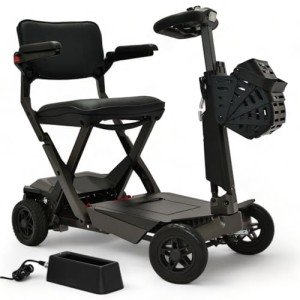The Reason The Biggest “Myths” About Mobility Scooter Could Actually Be True
Mobility Scooters: A Comprehensive Guide
Mobility scooters have actually ended up being a necessary mode of transport for numerous people dealing with mobility challenges. This short article explores the numerous elements of mobility scooters, including their types, benefits, features, and a guide for prospective buyers.
Understanding Mobility Scooters
Mobility scooters are electrically powered gadgets developed for people with restricted mobility. They supply a means of transportation for people who might have problem strolling however still wish to keep their independence. They can be found in various designs and features to cater to a wide variety of needs.
Kinds Of Mobility Scooters
Mobility scooters can typically be categorized into three main types:
Type
Description
Best For
Compact Scooters
These are small and lightweight, ideal for inside and short trips.
Users with limited storage area or those who take a trip frequently.
Mid-size Scooters
A balance between portability and stability, suitable for both indoor and outdoor usage.
Those who require to cover a variety of surfaces.
Heavy-duty Scooters
Large and robust, created for rugged outdoor usage and heavier people.
Users requiring additional weight capability or going off-road.
Key Features of Mobility Scooters
The option of mobility scooter often depends on the features that align with individual requirements. Here are some of the essential functions to think about:
Weight Capacity: Mobility scooters include different weight limitations. It is essential to select a scooter that can properly support the user's weight.
Variety: The distance a scooter can take a trip on a single charge varies. Depending upon user needs, one may choose scooters with a series of approximately 40 miles.
Speed: Most mobility scooters can reach speeds between 4 to 8 mph. Consider what speed is comfy and safe for the desired environment.
Turning Radius: A compact turning radius is vital for indoor usage, enabling simpler navigation in tight areas.
Battery Type: The type of batteries utilized can affect the scooter's efficiency. Lead-acid and lithium-ion batteries are the most common.
Advantages of Using Mobility Scooters
The advantages of mobility scooters extend beyond just transport. Some key advantages include:
Independence: Users can browse their environment without depending on caretakers, promoting self-reliance and self-esteem.
Health Benefits: Using a scooter can encourage outside activity, resulting in physical and mental health improvements by reducing sensations of isolation.
Convenience: Scooters can quickly be operated in various environments, whether indoors, in mall, or outdoors.
Crucial Considerations When Buying a Mobility Scooter
When purchasing a mobility scooter, a number of considerations can assist ensure that you pick the right model:
Assess Individual Needs:
- Mobility level: Consider how much assistance the person will require.
- Series of use: Determine where the scooter will mainly be utilized (indoors, outdoors, on rough surfaces, and so on).
Test Drive:
- Always test drive several models to find an ideal fit. Pay attention to convenience, ease of steering, and the scooter's responsiveness.
Evaluation Safety Features:
- Look for scooters with sufficient security functions like lights, indicators, and anti-tip styles.
Inspect Warranty and Service Options:
- A trusted guarantee and offered service alternatives are vital for long-term usage.
Frequently Asked Questions about Mobility Scooters
**1. How quick do mobility scooters go?Mobility scooters usually have speeds ranging from 4 to 8 miles per hour, with the majority of developed for safety instead of high-speed travel. 2. Exist weight constraints on mobility scooters?Yes, mobility
scooters include specific weight limitations, frequently ranging from
250 lbs to over 500 pounds, depending on the design. 3. Can mobility scooters be used indoors?Certain designs, particularly compact scooters, are particularly developed for
**indoor usage and are much easier to maneuver in tight spaces. 4. How often do the batteries need to be replaced?Battery life can differ based on use, but generally, with proper care, batteries may last in between 1 to 3 years before needing replacement
**. 5. Are mobility scooters covered by insurance?Coverage can differ, however some insurance coverage plans, including Medicare and Medicaid, may cover part of the cost. It's recommended to consult individual insurance coverage providers. Mobility scooters act as a
important tool for lots of individuals, allowing them to maintain
their flexibility and independence. By understanding relevant web site and functions of mobility scooters, people can make informed decisions tailored to their particular requirements.
Whether used for errands, interacting socially, or leisurely activities, mobility scooters can improve the quality of life for those with mobility constraints. Purchasing a mobility scooter is a choice that can substantially affect a person's day-to-day life. Therefore, individuals ought to carefully assess their choices and select a design that best lines up with their lifestyle and mobility requirements
.  ******
******